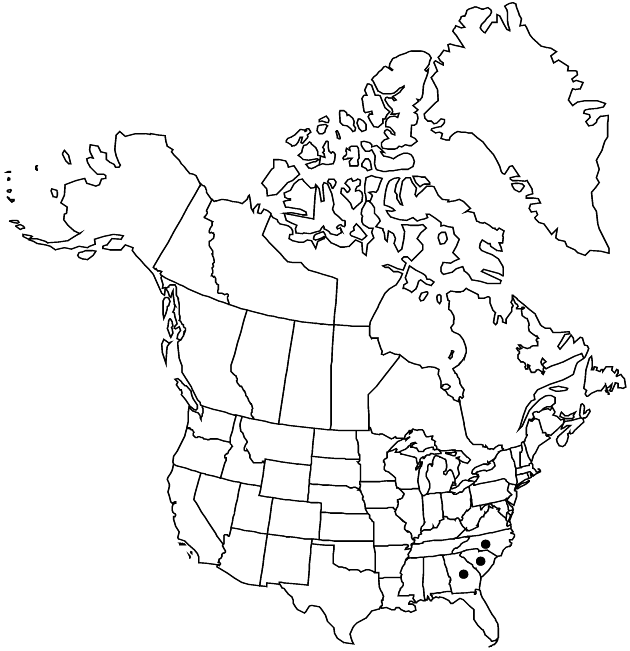Eurybia avita
Phytologia 77: 259. 1995.
Plants 30–50 (–80) cm; in clumps, eglandular; rhizomes short, creeping, ± woody in age. Stems 1–5+, erect to ascending, simple, strict, slender, stiff, proximally glabrous or glabrate, distally hirtello-puberulent. Leaves basal and cauline, firm, blades (1-nerved) linear to lance-linear or oblong-linear (grasslike), 25–140+ × 2–5 mm, ± coriaceous, bases sheathing, margins entire to remotely serrulate-spinose, indurate, remotely scabrous, spines thickened, apices acute, revolute, faces glabrous; basal and proximal cauline often withering by flowering, bases marcescent, ± long-petiolate; mid and distal progressively sessile and reduced. Heads 3–15+ in narrow, flat-topped corymbiform arrays. Peduncles densely hirtellous; bracts 1–2, usually immediately subtending heads. Involucres cylindro-campanulate, 7–9 mm, shorter than pappi. Phyllaries 30–55+ in 4–5 series, unequal, chartaceous, bases indurate, margins narrowly hyaline, scabrous, erose, fimbriate, apices appressed or reflexed, acute, sometimes acuminate (some outer), mucronate, marginally thickened, faces glabrous; outer lance-oblong, rounded, apical zones dark green, flat; inner linear-oblong, apical zones pale green, restricted to broadly acute tips. Ray-florets 8–20; corollas bluish white to lavender or deep violet, 5–10 × 1–1.7 mm. Disc-florets 15–45; corollas yellow, 5.5–7 mm, barely ampliate, tubes shorter than narrowly funnelform throats, lobes erect, triangular, 0.6–0.7 mm. Cypselae tan, fusiform, ± compressed, ca. 5 mm, ribs 7–10 (–12) (stramineous, broad), strigillose; pappi of cinnamon to sordid bristles 5.5–6 mm, equaling disc corollas. 2n = 18.
Phenology: Flowering late summer–early fall.
Habitat: Shallow sandy soils around edges of granite flatrock outcrops
Elevation: 100–500 m
Distribution

Ga., N.C., S.C.
Discussion
Of conservation concern.
Eurybia avita is known from Stone Mountain (the type location, where it is now extirpated according to R. Kral 1983, vol. 2) and granite flatrocks in Georgia, and from Pickens County in South Carolina, where it is imperiled; it is presumed extirpated from North Carolina (www.natureserve.org). Kral mapped the species; he underlined its similarities to both E. surculosa and E. paludosa and the need for further studies of its relationships.
Selected References
None.
Lower Taxa
"[" is not declared as a valid unit of measurement for this property."]" is not declared as a valid unit of measurement for this property.